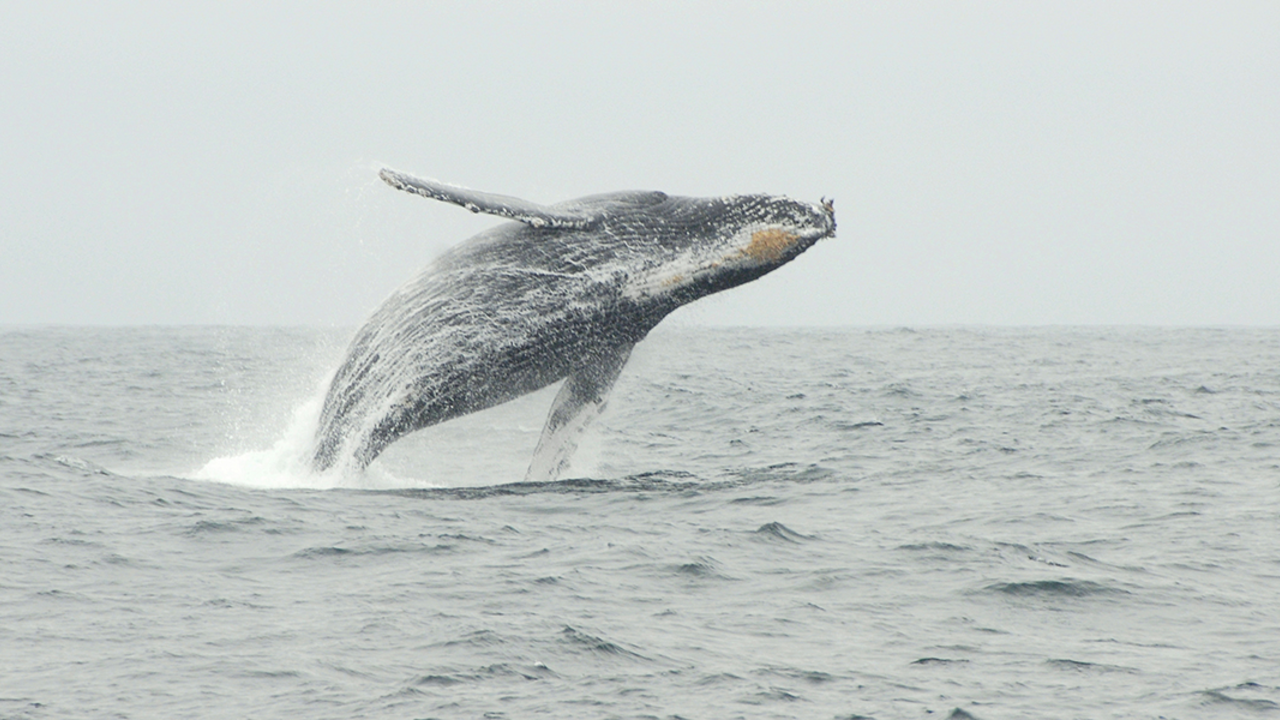Expert Tips for Whale Watching in the Golden Gate National Parks

Jessica Weinberg-McClosky/Parks Conservancy
The Golden Gate National Parks offer front-row seats to the migration of hawks, raptors, and also the largest mammals on the planet—whales. To see them, all you have to do is gaze out at the Pacific Ocean for a telltale sign of whales migrating nearby: Their spouts.
The first clue for identifying the species of whale is the time of year.
-
Humpback whales might be seen moving southward past the parks’ shoreline from November through March, on their way to overwintering grounds off the Mexican coast.
-
For gray whales, the peak of the southern migration generally occurs in mid-January—when they’re heading down to give birth to calves in the warm waters of Baja. They return with their young in spring, with the northbound migration peaking in mid March.
-
During the fall and summer, a boat ride to the Farallon Islands gives you a good chance to see humpbacks, blue whales, sperm whales, and even orcas.
Both Dr. Sarah Allen, an ecologist with the National Park Service, and Dr. Jaime Jahncke, California Current Group Director for Point Blue Conservation Science, recommend venturing to any point along the coastline to search for spouts and mysterious moving ridges.
“I saw people having great opportunities to see whales from the coast from the [Point] Bonita Lighthouse, Lands End, and both sides of the Golden Gate,” Dr. Jahncke said. “There were also people reporting populations of humpback whales from Pacifica and Half Moon Bay.”
In addition to those sites, Dr. Allen recommends the Point Reyes Headlands in Marin County and Mori Point in San Mateo County as destinations for whale spotting. Earlier this year, she took a trip to the Point Reyes Lighthouse, and she was greeted by spouts from humpbacks a little less than a quarter-mile off the shore.
Dr. Allen recommends bringing binoculars, of course, but acknowledges that it is difficult distinguishing different kinds of whales. For the two most common whales seen off the California coast, the main differentiating feature can be found on their backs. Humpbacks have a dorsal fin, while gray whales have a dorsal ridge.
Other tips:
-
Whale watch on calm days. Whitecaps on the water make it more difficult to spot whale spouts.
-
Check out WestCoast.WhaleAlert.org for a crowdsourced compilation of recent whale sightings. Naturally, photograph and report your own sightings on the website to help others!
-
If you’re playing percentages, visit the tip of Point Reyes in December and February. According to some studies, an astonishing 94 percent of migrating gray whales pass within one mile of this protected peninsula.
-
To see gray whale mothers and calves passing close to shore, keep your eyes to the ocean in late April and early May.
To make the hunt for these gargantuan mammals easier, go on days when the coast off the Golden Gate National Parks is experiencing minimal whitecaps. You’ll save yourself from the inevitable false alarms.
